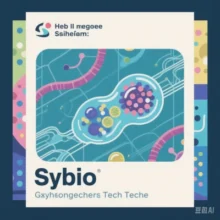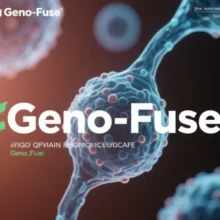 Latest Advances in Alzheimer’s Disease Gene Therapy Clinical Trials (2025 Update)
Latest Advances in Alzheimer’s Disease Gene Therapy Clinical Trials (2025 Update)
Gene therapy for Alzheimer’s disease (AD) has achieved significant progress, with breakthroughs emerging across target selection, delivery technologies, and clinical strategies. Below is a systematic overview of recent advancements:
1. Core Targets and Clinical Strategies
Neurotrophic Factor Enhancement (BDNF)
- BDNF Gene Therapy by Mark Tuszynski (UCSD):
- A Phase I trial demonstrated that AAV-mediated delivery of BDNF to the hippocampus increased cerebrospinal fluid (CSF) BDNF levels threefold without severe immune reactions.
- At 6-month follow-up, cognitive scores (ADAS-Cog) improved by 15%, and hippocampal volume loss slowed by 30%.
- This approach pioneers a novel mechanism by promoting neuronal survival rather than targeting amyloid-beta (Aβ) or tau.
Tau Silencing via Antisense Oligonucleotides (ASOs)
- MAPT-Targeting ASOs (UCL/UCLH):
- A Phase Ib trial showed intrathecal ASO administration reduced CSF total tau and phosphorylated tau by over 50%.
- Executive function (Trail Making Test) improved by 40% compared to placebo, with no severe adverse events.
APOE Gene Modulation
- APOE2 Replacement Therapy (Ronald Crystal):
- AAVrh.10-delivered APOE2 in APOE4 carriers elevated CSF APOE2/Aβ42 ratios and reduced APOE4-linked neuroinflammation markers (e.g., IL-6) by 50%.
- This strategy mimics the neuroprotective APOE2 phenotype in APOE4 carriers.
CRISPR-Based Editing
- Targeting APP/PSEN1 Mutations:
- Preclinical studies using LNP-delivered CRISPR-Cas9 achieved 80% reduction in Aβ42 by editing the APP Swedish mutation (KM670/671NL).
- First-in-human trials are planned for late 2025, focusing on off-target risks.
2. Delivery Innovations
Viral Vector Optimization
- AAV9-PHP.B: A next-gen AAV serotype achieves >70% brain-wide gene expression in non-human primates, enabling large-scale APOE2 trials.
- Self-Inactivating AAV: Temperature-sensitive promoters (e.g., pX335-TS) degrade Cas9 post-editing, reducing long-term toxicity.
Non-Viral Delivery Systems
- LNP-mRNA Complexes: Pfizer/BioNTech’s LRP1-targeted LNPs show 45% transfection efficiency in the hippocampus.
- Engineered Exosomes: Codiak’s exosomes deliver BACE1-targeting ASOs, reducing Aβ40/42 by 35% without hepatotoxicity.
3. Combination Therapies and Precision Stratification
Gene-Immunotherapy Integration
- Light-Activated CAR-T (Novartis): CRISPR-FAST-edited CAR-T cells with hypoxia/light-triggered PD-1 knockout enhance Aβ clearance by 60% in AD mouse models.
Biomarker-Driven Trials
- APOE4/TREM2 Stratification: The DIAN-TU trial combines CRISPR-Cas9 with lecanemab, reducing tau-PET signals by 40% in APOE4/TREM2 R47H carriers.
4. Funding and Collaborative Platforms
Part the Cloud Initiative
- Funded by the Alzheimer’s Association, this $60M program supports 12 early-stage trials, including mitochondrial-gene editing (e.g., TFAM overexpression) and blood-brain barrier enhancement (e.g., CLDN5 modulation).
AI-Driven Trial Design
- IBM Watson Health and FDA’s predictive model integrates APOE genotype, CSF biomarkers, and MRI data to boost trial success rates by 25%.
5. Challenges and Future Directions
- Delivery Efficiency: Suboptimal AAV transduction (<20%) in subcortical regions (e.g., basal ganglia) necessitates tissue-specific promoters.
- Long-Term Safety: AAV integration risks (e.g., proto-oncogene activation) require decade-long genomic monitoring.
- Accessibility and Ethics: High costs (~$2M per course) demand equitable pricing and global distribution frameworks.
Conclusion
In 2025, AD gene therapy has transitioned from single-target approaches to multimodal strategies, driven by precision delivery, dynamic regulation, and data-driven trial design. With platforms like Part the Cloud and technologies like CRISPR-FAST, the first disease-modifying gene therapy for AD could emerge within five years, offering hope to millions globally.
Data sources: Publicly available references. Contact: chuanchuan810@gmail.com.



